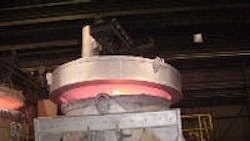You're reading a story in your favorite trade publication (hopefully IndustryWeek) about the successful energy-savings features that a steel mill implemented two years ago. The information provides some valuable tips but isn't directly relevant to your industry because you work at an oil refinery.
That's where benchmarking tools such as the Environmental Protection Agency's Energy Performance Indicator (EPI) tool come in handy. The ideal way to understand where energy-reduction opportunities exist is by comparing your operations to a like industry, says Gale Boyd, director of the Triangle Census Research Data Center in the Department of Economics at Duke University.
"Particularly for a small manufacturer, they may know how Plant A is doing compared to Plant B, but they may not know that Plant A is barely average compared to the industry," Boyd explains. "So if their peers are doing better, that tells them something about what they should be able to do, and since a lot of businesses are in competition to improve, knowing where you stand in the race is an important part of the picture."
| Power Shift: How to Produce More for Less |
The EPI is an Excel-enabled tool that allows users to input certain plant data that is calculated based on a formula. Participants can then compare their data to the industry average and see their percentile ranking. To view an example of an EPI in the cement industry visit www.energystar.gov/index.cfm?c=in_focus.bus_cement_manuf_focus and click the "Download the Cement Plant EPI" link. A plant is considered to be efficient if it ranks in the 75th percentile.
Once a ranking is achieved, the participating company can then use the information to assess its strengths and weaknesses and develop energy-savings measures.
"In every one of these industries the opportunities are different," Boyd says. "In auto assembly, it's painting cars. In corn refining it might be cogeneration as well as efficient operation of pumps and motors. For cement you have the kiln itself, which is a huge energy user but also all the grinding that goes into preparing limestone feedstock."
The performance indicators are part of the EPA's Industries in Focus tools designed for specific manufacturing sectors. Resources include energy guides that provide energy-savings recommendations and analytics for a particular industry and networking events and meetings.
About the Author
Jonathan Katz
Former Managing Editor
Former Managing Editor Jon Katz covered leadership and strategy, tackling subjects such as lean manufacturing leadership, strategy development and deployment, corporate culture, corporate social responsibility, and growth strategies. As well, he provided news and analysis of successful companies in the chemical and energy industries, including oil and gas, renewable and alternative.
Jon worked as an intern for IndustryWeek before serving as a reporter for The Morning Journal and then as an associate editor for Penton Media’s Supply Chain Technology News.
Jon received his bachelor’s degree in Journalism from Kent State University and is a die-hard Cleveland sports fan.
